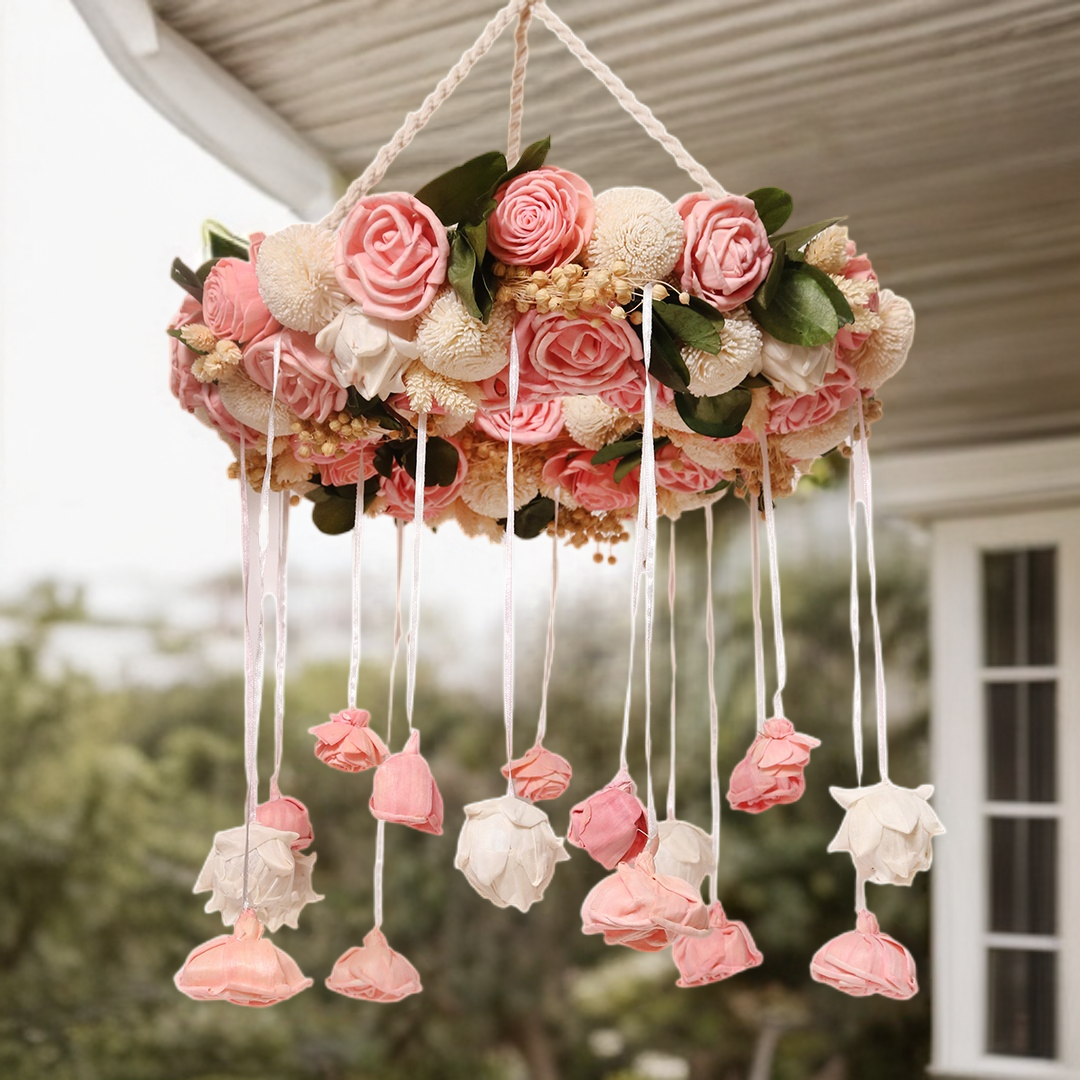As Diwali approaches, homes across India and the diaspora come alive with the vibrant tradition
of door hangings.
These beautiful decorations, known as torans or bandhanwars, have graced Indian doorways for
millennia, evolving from simple natural materials to elaborate artistic creations while
maintaining their sacred significance.
Ancient Roots in Sacred Tradition
The practice of adorning doorways with decorative hangings can be traced back to ancient
Indian civilization, with the word "toran" derived from the Sanskrit "torana," meaning a sacred
or decorative gateway.
The earliest archaeological evidence dates back to the 3rd century BCE with the Sanchi Stupa,
where stone torans imitated the brick and timber constructions of that era.
Even ancient texts like the Bhagavad Gita and Puranas describe hanging leaves at entrance
doors, alongside ornamental water pots and lights.
The Traditional Foundation: Nature's Bounty
Originally, torans were crafted entirely from natural materials - fresh marigold flowers and
mango leaves being the most prevalent. These weren't merely decorative choices; each element
carried deep symbolic meaning.
Mango leaves were believed to absorb polluted air from outside, allowing only fresh air to enter
the home. The vibrant green color was thought to ward off negative energies while promoting
calm and relief.
Marigolds, with their bright orange and yellow hues, represented cleanliness, clarity, and
passion.
The colors held special significance too - red, yellow, orange, and green became the standard
palette for traditional torans. When fresh materials weren't available, leaves from banyan,
peepal, or ashoka trees served as alternatives.
The Sacred Purpose Behind Beauty
Beyond their aesthetic appeal, torans serve as spiritual gateways. Their primary purpose is
welcoming guests into the home, with stepping under a toran signifying entry into a sacred space
filled with warmth and hospitality.
Importantly, they're believed to attract Goddess Lakshmi, the deity of wealth and prosperity,
whose presence brings success on the spiritual path.
Many homeowners also believe that hanging torans can ward off harmful spirits and negative
energy while helping wishes come true.
Modern Evolution: Artistry Meets Tradition
Over centuries, torans have evolved to incorporate diverse materials including cloth, beads, and
metal, reflecting changing artistic trends while preserving cultural significance.
The Kathipa style from Gujarat exemplifies this evolution, featuring silk embroidery on cotton
foundations with intricate geometric designs, crenellated borders, and mirror work.
These sophisticated pieces demonstrate how traditional craftsmanship adapted to new materials
and techniques.
Maeva torans range from handcrafted fabric creations to metal designs that stylistically resemble
mango leaves.
Modern variations from Maeva include everything from minimalist contemporary designs to
elaborate beadwork pieces, yet they all maintain the core symbolic elements of their ancestors.
Preserving Meaning Through Change
What makes the evolution of torans remarkable is how they've maintained their spiritual essence
despite material transformations.
Maeva Diwali Decor Collections crafted from fresh mango leaves or modern fabrics, these door
hangings continue serving their ancient purpose: creating sacred thresholds that welcome
prosperity, ward off negativity, and honor the divine feminine energy of Lakshmi.
As we prepare our homes for Diwali this year, hanging a Maeva wall and door decor connects us
to thousands of years of tradition, proving that some customs transcend time while beautifully
adapting to contemporary life.

